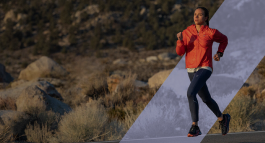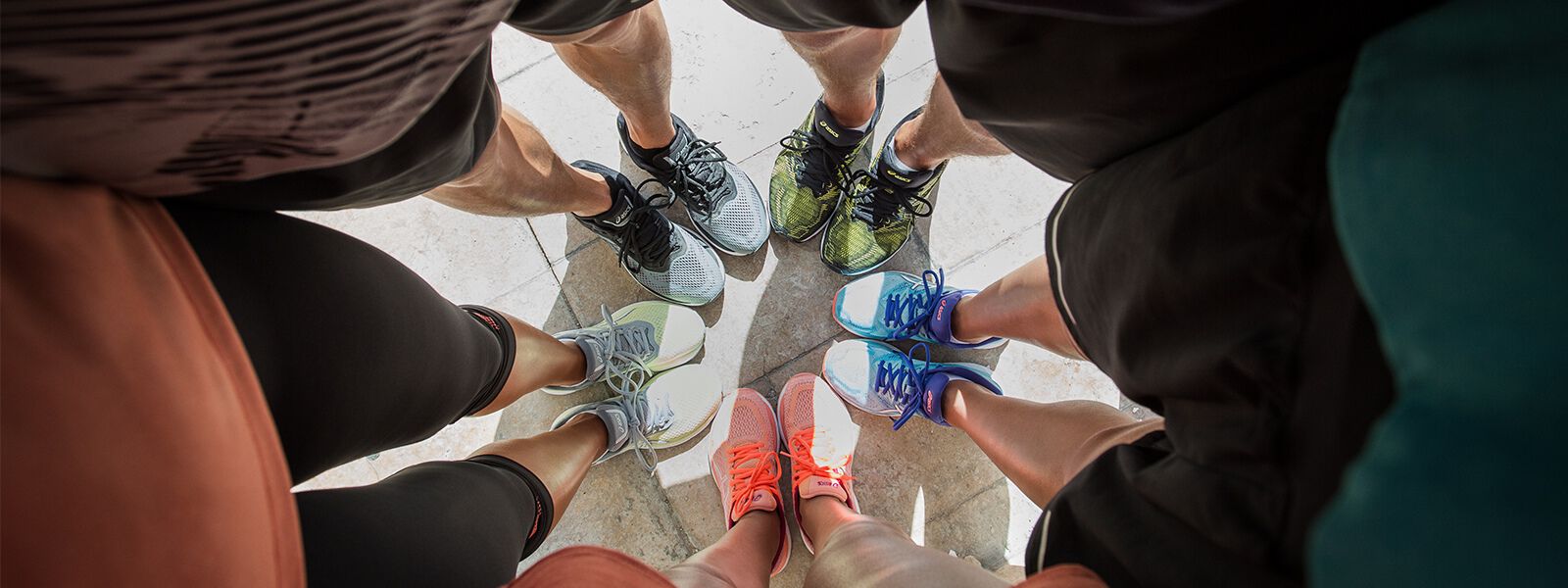What running shoes should you buy?
Over the last few decades, running footwear has improved dramatically, with new materials, structures and shapes introduced every year. Countless scientific studies have demonstrated that proper running shoes improve your performance, while also reducing the risk of injury.
There are many kinds of running trainers available, so choosing running shoes can be difficult if you don't know what you're looking for. Let's explore the different types of running shoes to help narrow down which running shoes you should buy.
What to consider when buying running shoes
When you’re thinking about which running shoes to buy, the first step is to consider your personal running style, how you run and where. This will quickly narrow down which running shoes are right for you. Learn how to know what running shoes to buy in the following six steps.
1. What is your pronation type?
Pronation refers to the natural movement that occurs when your foot hits the ground while you run. There are three pronation types, and each has a corresponding type of running shoe.
-
Neutral pronators: Your feet initially strike the ground with the outside heel, then roll onto the balls of your feet evenly, before pushing off with the whole front of the foot.
-
Overpronators: After striking the ground with the outer heel, your feet roll onto the inside of your foot, so you push off the ground with your big toe.
-
Under pronators: Your feet strike the ground on the outer heel, but don’t roll inwards much. Your weight is carried on the outside of the foot, and you push off the ground with your small toe.
Read our guide to learn more about pronation.
2. Have you had a gait analysis?
Gait analysis is a helpful way to learn about how your body moves when you run, and what kind of pronator you are. You can get your gait analysed by our experts at any ASICS store in the UK. Experienced staff film your feet while you run on a treadmill, and then recommend shoes based on your specific gait.
3. What surface are you running on?
The surface you run on will also affect which running shoes you buy. Different types of running shoes are appropriate for different surfaces:
-
Road running: Road running is the most popular kind of running. It requires shoes with a one-directional tread and extra cushioning in the heel as this is where most force gets transferred while you exercise.
-
Trail running: If you regularly run on muddy paths, trail running shoes are the best option. They provide you with extra-large lugs that help you grip on uneven surfaces, and also use cushioning throughout the sole to give more protection against stones and other sharp objects.
-
Treadmill running: Similar to road running, treadmill running shoes require less grip and place most cushioning in the heel. Since treadmills offer a little more spring than a tarmac road, you won't need quite as much cushioning.
-
Track running: Most people who run on tracks benefit from a faster, lighter shoe, with a lower profile and less cushioning - this allows them to build up speed during races.
4. What socks are you running in?
The socks that you run in should also be a consideration when you're choosing running shoes. If you run regularly, then it is highly recommended to wear a pair of structured running socks which will offer more cushioning and support.
Depending on where you live and the season, you may choose thicker and longer socks or shorter and thinner socks. Whatever running socks you prefer, it's useful to try running shoes out in the socks you most regularly run in, so you know how tight they’ll feel.
5. What is the right running shoe size for you?
As a rule of thumb, most running shoes should be around half a size larger than your normal footwear - according to an expert quoted on the Healthline website. This is because your feet will swell during running, so a larger size gives you some leeway.
6. How far are you running?
The distance you run should also be a factor when choosing running shoes. If you regularly run long distances, choose a running shoe with a larger amount of cushioning in the heel. For shorter runs and track races, you want a more aggressive and lightweight running shoe (with less springy cushioning) that will allow you to accelerate with ease.
What are the different types of running shoes?
There are several different types of running shoes available. Here are five of the most common types of running shoes used today:
1. Cushioned running shoes
Cushioned running shoes are designed for neutral runners. They provide most of the cushioning in the heel of the shoe, which is where your foot strikes the ground. There tends to be less cushioning at the front as you push off. The GEL-CUMULUS is one of our most popular pairs of cushioned running shoes.
2. Stability running shoes
Stability running shoes are designed for people who over or under pronate. They offer additional support in the midfoot which can help counteract the tendency for the feet to roll uncomfortably far inwards, or where too much weight is distributed on the outside of the foot. At ASICS, we provide a wide range of stability shoes for both overpronators and under pronators.
3. Motion-control shoes
Motion-control shoes have a wide, straight shape that makes them well-suited to those with flat feet. This type of shoe provides maximum support and control to prevent overpronators from rolling their feet too far inwards. TheGEL-KAYANO is a great example of a motion control running shoe.
4. Long-distance running shoes
Long-distance running shoes feature extensive use of cushioning in the heel area, as well as lightweight foams and breathable uppers. Many ASICS running shoes are suitable for long-distance running, including the popular GEL-NIMBUS™.
5. Trail running shoes
Trail-running shoes are designed with much more aggressive tread patterns to cope with terrains such as mud and rocks, and they also feature the use of water-resistant materials in the uppers to keep your feet dry when you splash through puddles. We have designed a large range of world-class trail running shoes, such as the popular GEL-FUJITRABUCO™.
You get what you pay for
Due to the innovative technology used, quality running shoes tend to be quite expensive. However, you can rest assured that a higher price does generally correlate to more comfort and better features. That said, you do not have to go out and buy the most expensive shoes you can find in order to experience a comfortable, stable and well-supported run.
At ASICS, we produce many different types of running shoes for all kinds of runners. Browse our men’s running shoes and our women's running shoes to find the right pair for you. If you're still unsure which running shoes are right for you, useASICS’ shoe finder to narrow down your search.



